“Now let’s see. Animal, vegetable, or mineral? Maybe this little thimble belongs to a kingdom all of it’s own. The fourth kingdom. The kingdom of plastics.”
~"The Kingdom of Plastics" film 1945
"The Kingdom of Plastics" film 1945 (The Charlie Dean Archives)
Plastic: It started with a billiard ball!
The invention of plastics helped us cross the frontier from having extremely limited consumer options to having an abundant and flourishing consumer driven society. The word plastic originally comes from the Greek word plastikos and it means moldable. Before plastics were invented, all goods were made from natural materials such as metal, glass, wood or other plants, or animals. The materials were extremely limited and the finished products were extremely valuable because of the time and effort they took to create, like harvesting silk from silkworms or making billiard balls from elephant tusks. Plastics, on the other hand, were cheap to produce and therefore very abundant. They made it so that more people, not just the richest people, could have a more comfortable and varied lifestyle. Plastics were also stronger and lighter than the natural materials they replaced.
Letter written by John Welsey Hyatt Aug, 25, 1888
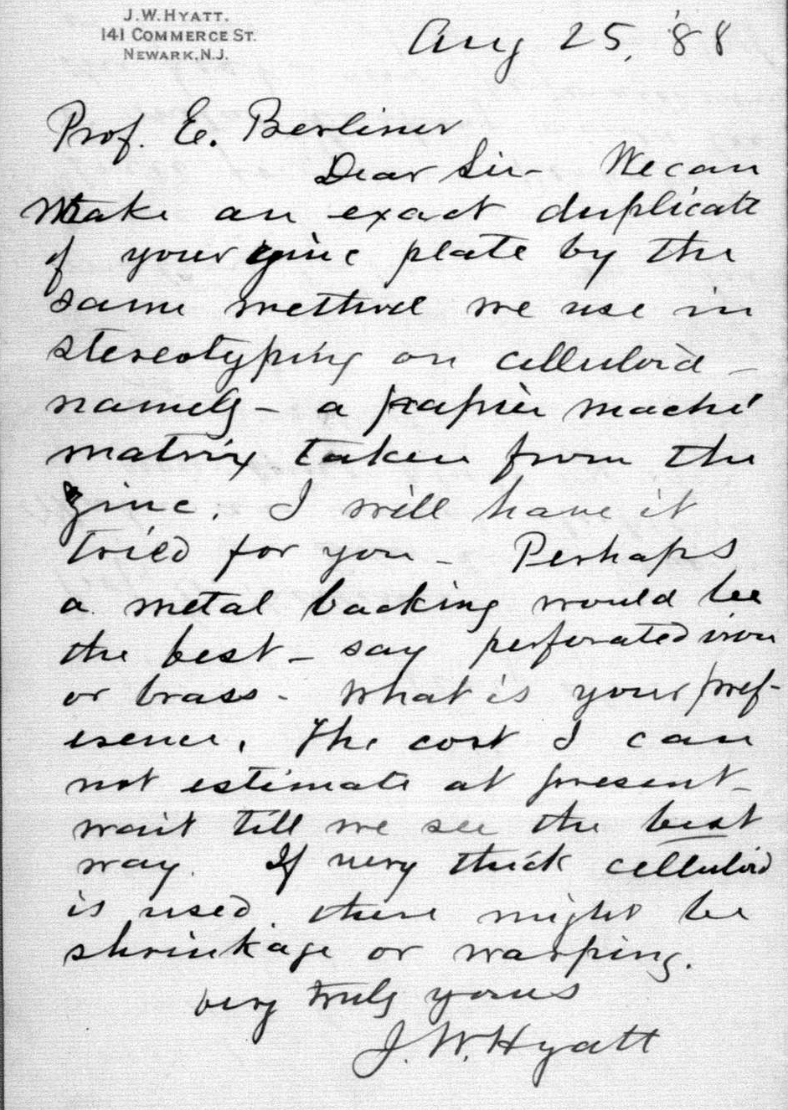
In 1873, there was a contest for developing a new material to make billiard balls. Billiards was becoming wildly popular, and the supply of elephant tusks was running low. The growing middle class wanted entertainment. John Wesley Hyatt answered the call to win the $10,000 prize to create a new material that could be used for these billiard balls. His new material, which was partially synthetic, was called celluloid. It was praised as the savior of animals like the elephant, tortoise, and snails that were used to make products that could now be made of plastics and at first that’s what it did.
In 1907, chemist Leo Baekland invented the first fully synthetic plastic and he named it Bakelite. It is a petroleum product and was better than celluloid because it wasn’t flammable and it could be made in any color and molded in any shape. Some of the first uses of Bakelite were radios, telephones, and insulation for wires. In 1939, with the start of World War II, the newly found material was used for wartime purposes such as nylon parachutes, helmets, airplane windshields, grenades and even the atomic bomb; this was just the beginning of the rise of our plastic nation. It was more abundant than any of the other natural resources we had before and chemists found so many different uses for it.
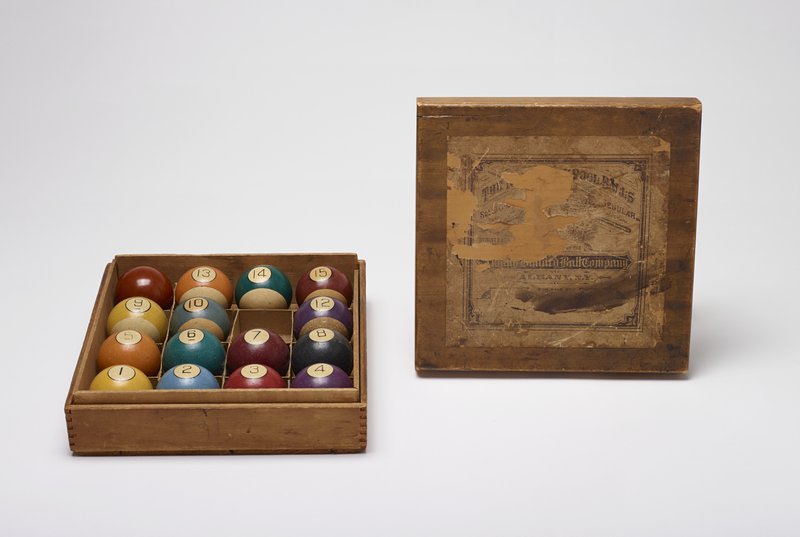
Celluloid billiard balls (National Museum of American History)
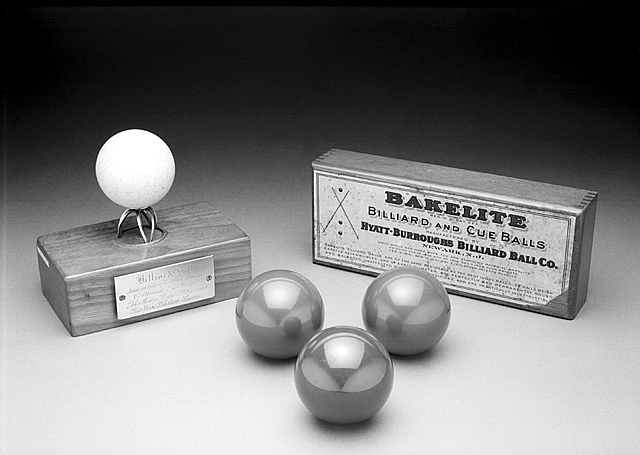
Bakelite billiard balls (National Museum of American History)
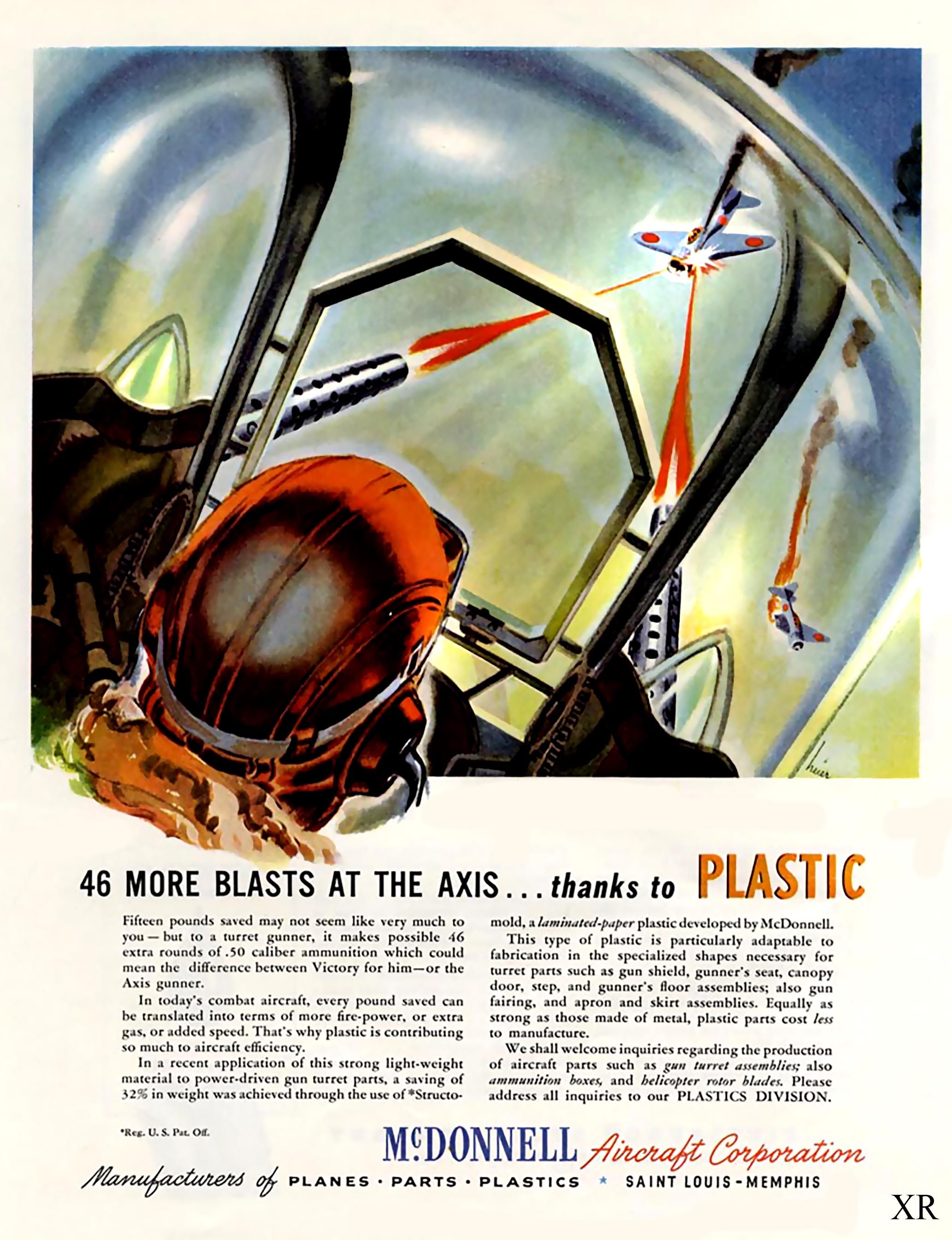
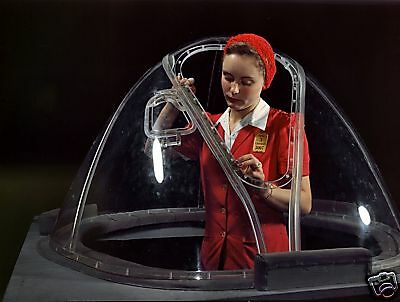
Above left: Magazine advertisment (Dieline) Above right: Plexiglass airplane windshield (Dieline)
After World War II ended, chemical companies wanted to keep making money so they crossed a frontier in history, finding new consumer uses for their products made from plastics. Manufacturers got to work on advertising campaigns to convince Americans of all of the amazing new products they needed. Once that frontier was crossed, we passed over into a new world with seemingly endless possibilities. This new world seemed like heaven. We no longer had to kill elephants to play a game of billiards. Everything from carpet to wall paper, to tupperware to milk jugs began to be made from plastics, and there was enough for everyone--not just the wealthy upperclasses.
“We were a nation of consumers, a society increasingly democratized by our shared ability to enjoy the conveniences and comforts of modern life. Not just a chicken in every pot, but a TV and stereo in every living room, a car in every driveway. Through the plastic industry, we had an ever growing ability to synthesize what we wanted or needed…”
~ Susan Freinkel
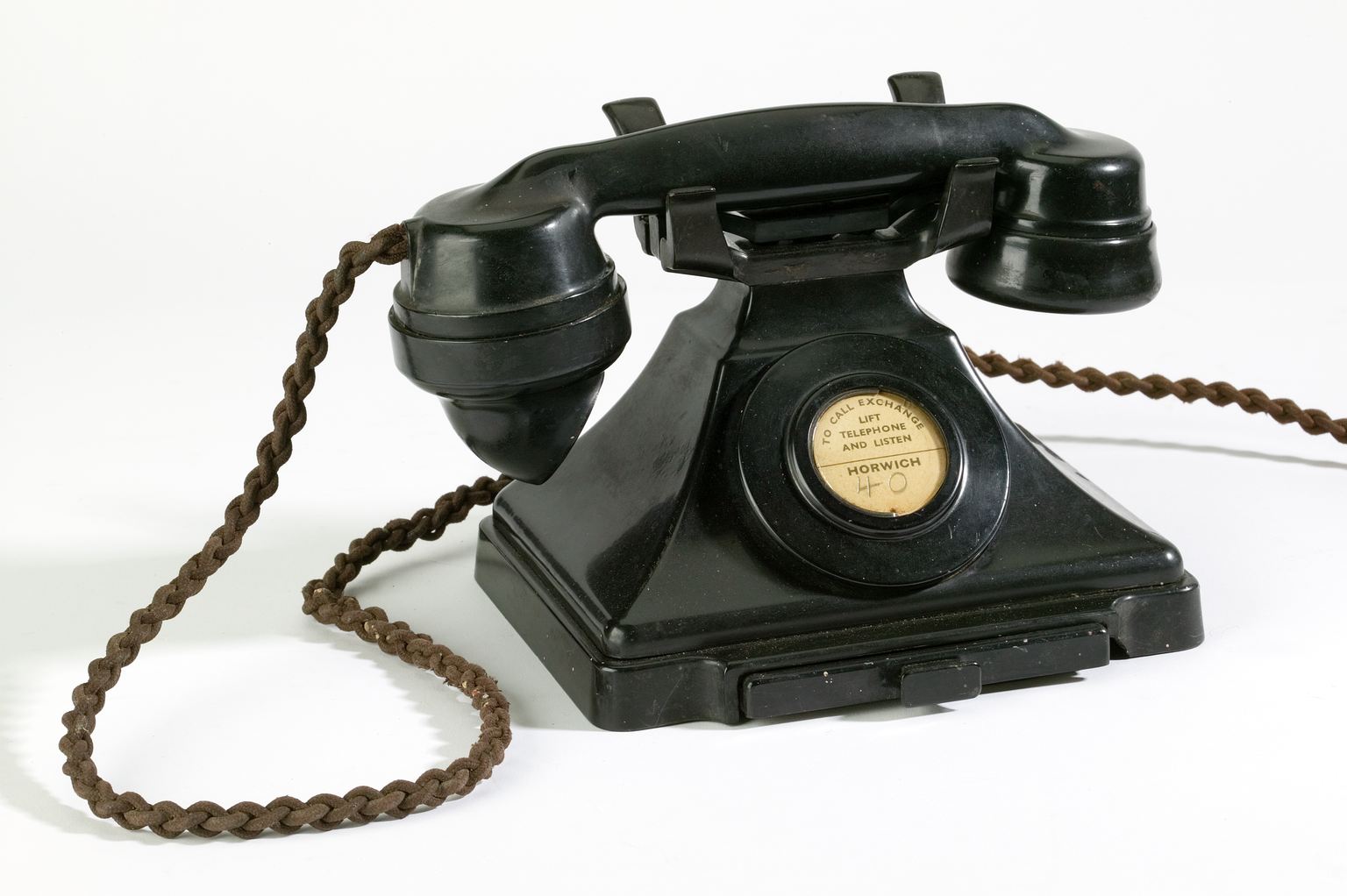
Bakelite phone c.1934 (Science Museum archive)
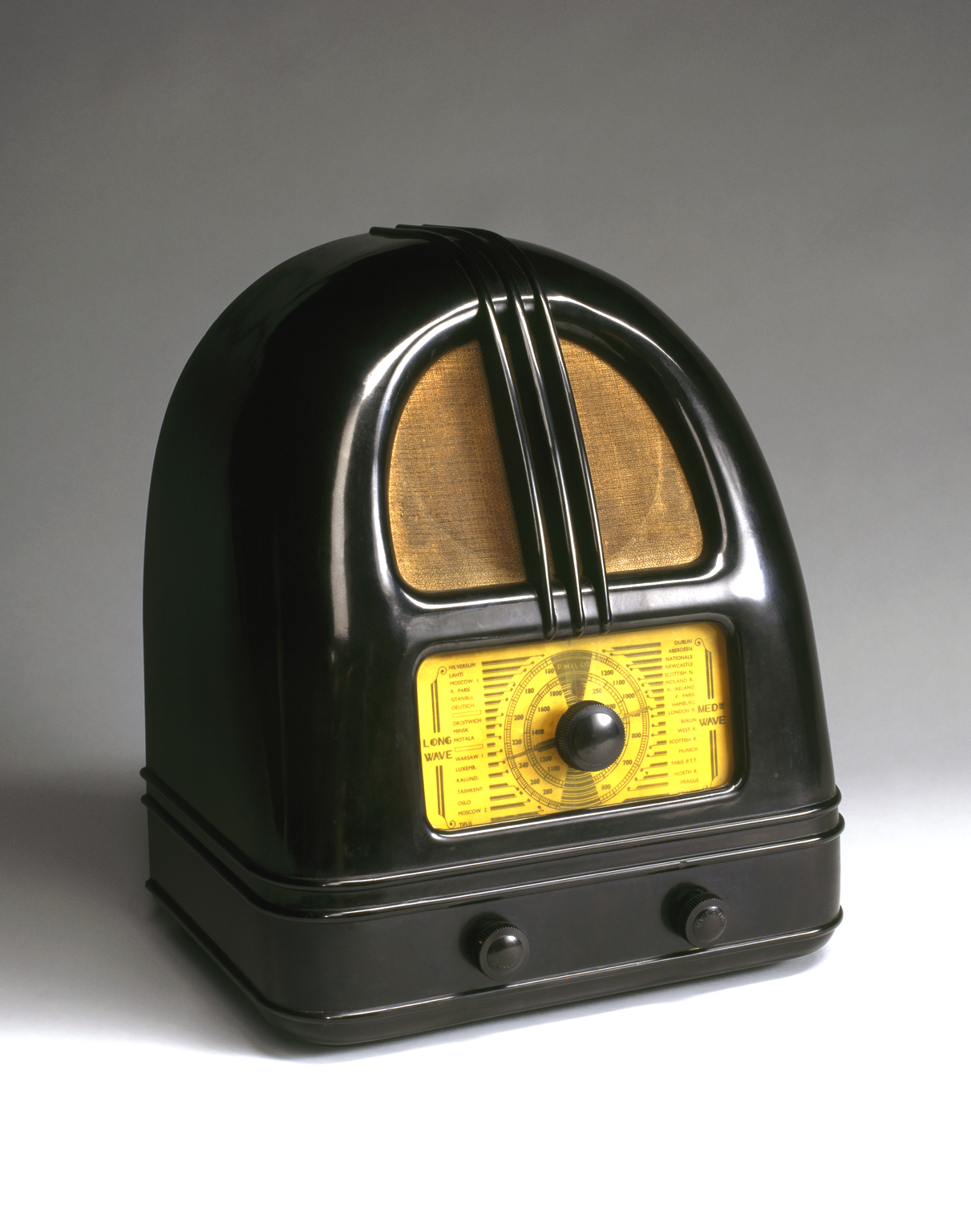
Bakelite radio c.1936 (Science Museum archive)
